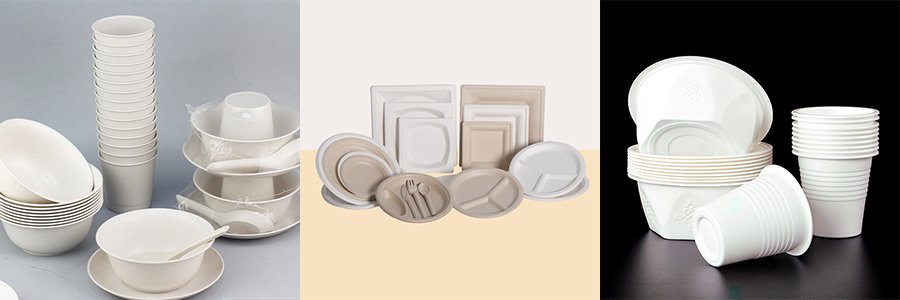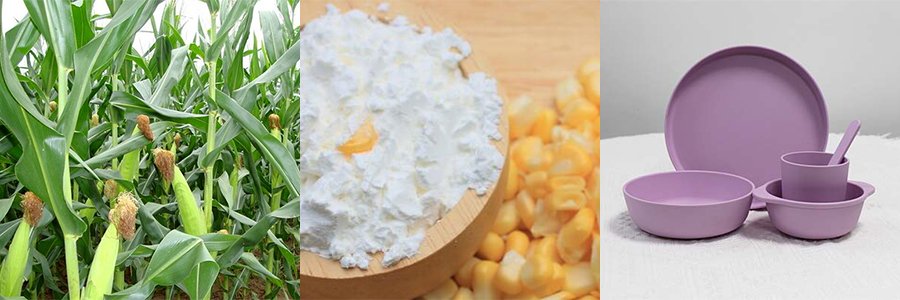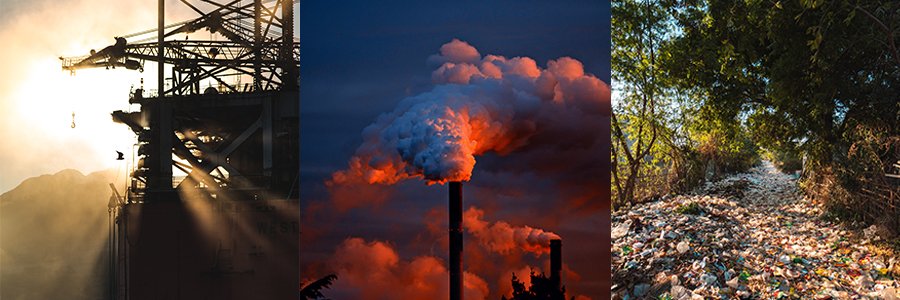We make Bio-based products or partly from materials with a biological origin. Such as plants, animals, or other renewable agricultural, marine, or forestry resources. These goods provide alternatives to conventional petroleum-based materials. By employing renewable carbon as a feedstock. The EU has prioritized bio-based products. Due to their significant future growth potential and sustainable design. Which supports the bio-based economy.
In this article, we have included the life cycle of single-use plastic tableware. The substitutes are both disposable and reusable items made of biodegradable plastic.

To execute a practical assessment, the items arranging in place settings. Each consisting of a cup, a plate, and cutlery.
What is The Life Cycle of Biodegradable Tableware
Biodegradable and compostable tableware, in conjunction with organic recycling. It is best option for catering at quick-service restaurants, contract catering events. because it reduces the carbon, water, and resource footprint. And is in complete accordance with the circular economy's guiding principles.
Embodied Energy of Biodegradable Cutlery
Making recyclable or compostable items has received more attention. Due to trash being a significant problem in the world. When examining a product's life cycle, must to consider its embedded energy. It considers all the energy needed to create something from birth to death.
Many businesses work to address this problem by producing friendlier, compostable utensils. Because conventional plastic utensils contribute to landfills.
We can use several materials, including bamboo and bioplastics, to create them. What does it signify energy use that some of these utensils are biodegradable? Even though a product is biodegradable. if it uses a lot of energy throughout its entire lifecycle, it doesn't matter.
Compared to other polymers like polyethylene terephthalate. Polylactic acid uses less energy to manufacture utensils. But still consumes a lot of energy throughout its whole life cycle.

How to Calculate the Embodied Energy of PLA
One must factor in the broad categories of agricultural. Manufacturing, transportation, and end-of-life alternatives. When calculating the embodied energy of PLA.
Production, harvesting, and drying of corn; transportation to the corn-wet mill. Transformation of starch into dextrose; transformation of lactic acid into lactide. And, polymerization of lactide into Ingeo polymer pellets that turn into kitchenware.
After delivering and given to customers. We can use the dishes before being either recycled, composted, placed in a landfill, or burned.
Life Cycle of PLA
Grain Harvest
The life cycle begins with the harvest of grain. The corn plant's solar energy for its free energy obtaining through photosynthesis. This indicates that the starch molecule's total carbon, hydrogen. And oxygen content came from carbon dioxide and water.
Along with maize, other products produced from corn. Include corn seed, fertilizers, limestone, electricity, and farm fuels. Including natural gas, diesel, propane, and gasoline. It comprises atmospheric carbon dioxide by photosynthesis and water irrigating the crop.
Finally, it covers the manufacture of the pesticides and herbicides. required to safeguard corn. During this production stage, 28.86 MJ/kg Ingeo of gross energy using. Of this, 24.97 MJ comes from renewable feedstock energy.
Starch Preparation
After harvest, the corn grain taking to a corn-wet mill (CWM). where the corn kernel's starch seperating from its other components. These consist of ash, water, proteins, fibers, and lipids. This entails softening and releasing the corn's st. Simmering it in water for thirty to forty hours at a temperature of about 50°C.
Isolation of the starch after the mashing of the maize. Enzymes using to hydrolyze the starch into dextrose.
Fermentation Process
The lactic acid fermentation process receives the dextrose solution through the pipeline. The CWM also produces corn germ, heavy steep water, corn meal, and corn gluten feed. The creation of potable and cooling water, compressed air, chemicals, and enzymes. As well as the production and transmission of electricity, natural gas, and steam. Are all included in the energy use.
When dextrose from the CWM fermentation, lactic acid is generation starts. The procedure creates crude lactic acid. By mixing dextrose with other media, a microbial inoculum.
Polymerization of Lactide
Lactide polymeration starts to create polylactide polymer in a continuous process. which is the preparation step for ingeo. A low molecular weight prepolymer creation. In the first stage by condensing lactic acid while removing water.
The prepolymer is then transformed into lactide, a cyclic dimer, and evaporated. After that, distillation using to clean up the lactide mixture.
Finally, ring-opening lactide polymerization uses to create high molecular weight Ingeo. Any lactide monomer still presents after the polymerization finishes. And taking out and recycled.
Preparation of Tableware and Utensils
After the creation, Ingeo plastic resin shipping starts to businesses. That use it to create kitchenware. Most transportation involves trucks. Which move raw materials to refineries or producers. Producers to retailers or customers, and consumers to disposal facilities.

Energy Involved in whole PLA Life Cycle
We must include the energy required to create the fuel. Utilized in turning Polylactic acid into cutlery. must include in the total energy required to complete the procedure. PLA’s fossil resource depletion is roughly 30 MJ/kg. Crude oil, gas/condensate, coal, metallurgical coal, lignite, peat. And wood are the primary fuels needed to generate 1kg of Ingeo.
For every kilograms of Ingeo, crude oil contributes 60,300 mg, gas/condensate 378,876 mg, and coal 577,430 mg. It is difficult to explain because there is a lot of room for analysis. About the lifecycle of each of these energy sources.

Effectiveness of PLA as a Biodegradable Tableware
The life cycle of Polylactic acid, which involves many processes. and steps, uses less energy than the life cycles of some other materials. Such as Polyethylene Terephthalate.
But, energy from fossil fuels is still needed for creating PLA. Which we used to create products like utensils. Its embodied energy will be lower if we use more renewable energy. Considering how much effort and labor goes into producing. Something as basic as a plastic fork seems absurd. A tool's biodegradability is fantastic, but it loses some of its usefulness if it winds up in a landfill.
People would be more likely to reuse utensils or refrain from using them altogether. If they were more aware of the energy usage during a utensil's entire life.


